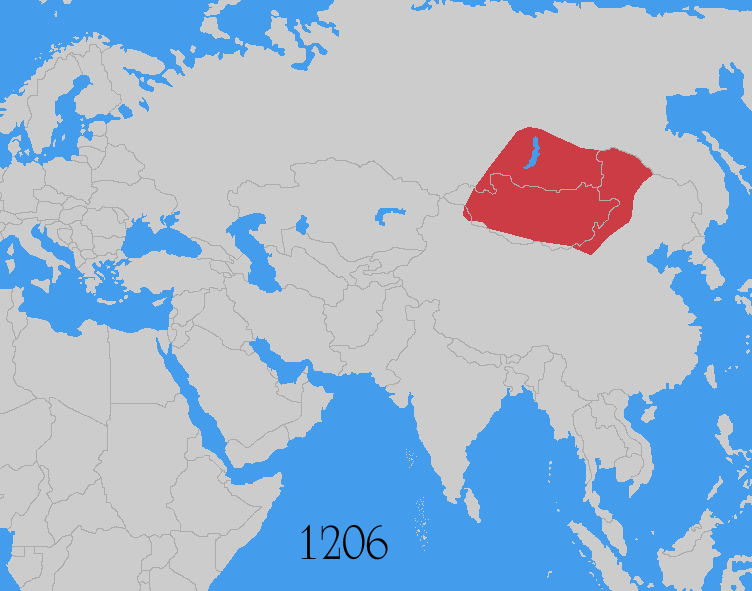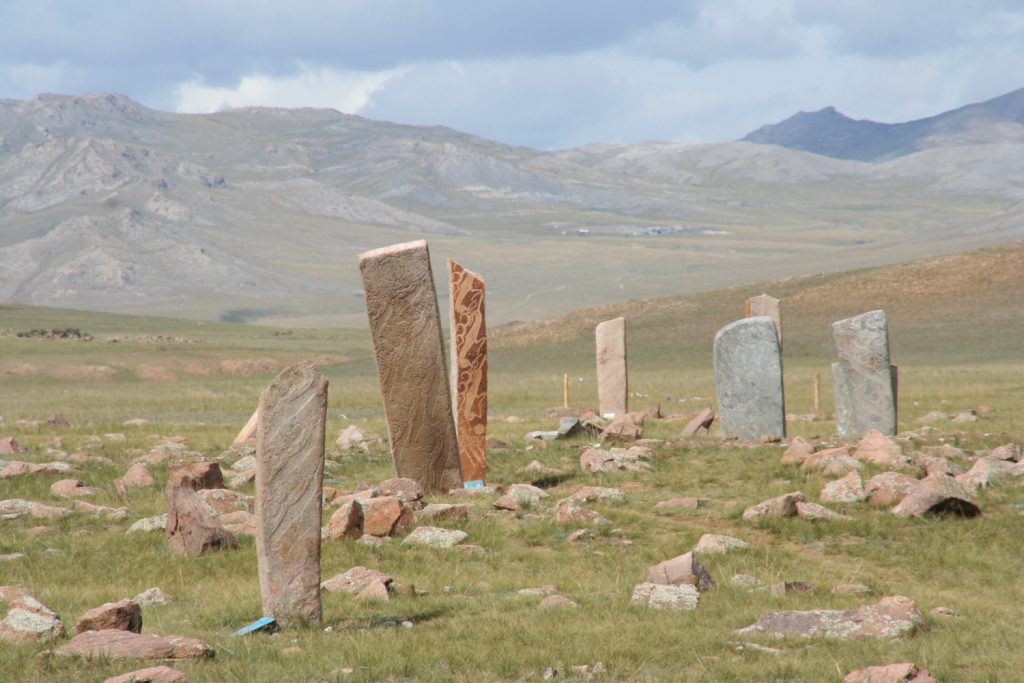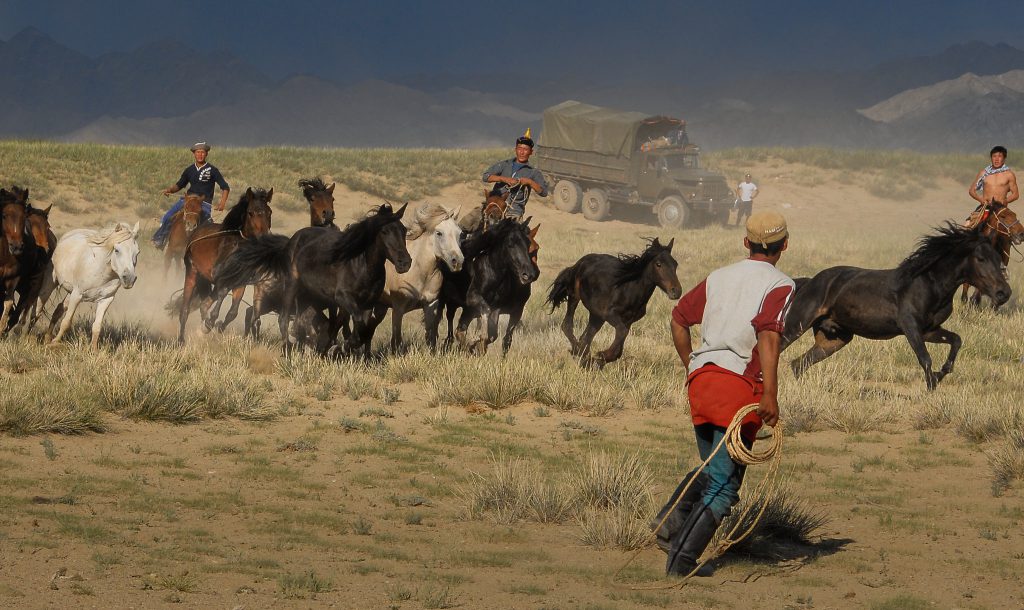When Did Horses Transform Mongolians’ Way of Life?
Genghis Khan is one of history’s most successful, and most vilified, military commanders. Under his leadership, the once divided nomadic tribes of the Eurasian steppe together conquered an immense territory, ultimately forming the Mongol Empire. The ruthlessness of Genghis Khan’s troops, his use of novel military strategies, and his sheer tactical brilliance became legendary. By the time he died in 1227, the Great Khan’s reign had changed the world forever—by 1279, the empire was the largest in history to unify contiguous land regions.
And during the century following his death, the heirs to his empire helped shape the ruling dynasties of Iraq, Turkey, China, Russia, Korea, Kazakhstan, and Uzbekistan. And an astonishing 8 percent of the current male population in Asia may trace its ancestry to Genghis Khan’s lineage, according to genetic research.
But while the Great Khan’s military expertise and leadership played a key role in his unrivaled success, there is arguably no more significant element in the rise, expansion, and dominance of the Mongol Empire than the horse.
Genghis Khan’s command of the power of horses grew out of a long tradition of Central Asian horse culture. Archaeological excavations in Kazakhstan have revealed evidence for harnessing horses and the consumption of horse milk as far back as 3500 B.C. Some anthropologists have even argued that the spread of the Proto-Indo-European (PIE) language from the Caspian Sea to the Portuguese coast was linked to a series of invasions from PIE-speaking cavalry beginning around 5000 B.C. However, definitive evidence of horse domestication in the archaeological record from this period has been elusive. Nonetheless, once horses were domesticated, they quickly began to play an outsize role in political, economic, and military affairs across the region.
In the fifth century B.C., the ancient Greek historian Herodotus wrote with admiration about the dauntless Scythian cavalry of Central Asia, who had repeatedly thwarted the advances of Emperor Darius I’s Persian forces in the sixth century B.C. Modern historians and archaeologists echo Herodotus’ praise, noting how horse-mounted Scythian soldiers moved quickly, up to 50 kilometers a day, and attacked with an agility unparalleled in the premodern world. As Jared Diamond notes in Guns, Germs, and Steel: The Fates of Human Societies, it wasn’t until the First World War, with the use of armored vehicles, that the age of cavalry supremacy finally ended. Thus, over the course of his conquests, Genghis Kahn possessed the most advanced weapons system available until modern times.
The impact of horse domestication on trade, food production, transport, and warfare for the Mongols was immense. But while horses have long been exploited for many purposes, the only activity that required domestication was routine riding. In contrast to other uses—such as pulling a chariot, where the equipment and presence of other animals made horses more passive—for frequent riding, the animal’s natural tendency to buck or flee had to have been bred out. So domestication was not a matter of training wild horses to obey commands. Rather, domestication involved genetic changes that occurred over generations of selective breeding for particular traits such as docility, size, or comfort with a rider. This biological process allowed for humans’ increasing dependence on horses for riding.
So when exactly did the process of horse domestication begin?
While some archaeologists argue that horses were fully domesticated by 5000 B.C., the evidence remains somewhat circumstantial. Finding clues in the archaeological record requires identifying horses used in activities that suggest domestication, particularly riding, and has proven surprisingly difficult. As David Anthony, professor of anthropology at Hartwick College, explains, “early horse domestication left very few marks on the equine skeleton,” so archaeologists have had a difficult time differentiating between domestic and wild breeds. In addition, what little evidence of harnessing there is may be a result of riding—but it could indicate other activities that do not require domestication, such as pulling chariots or plows. As a result, the question of the timing and location for the earliest domesticated horses remains hotly debated.
Remarkably, despite the widespread use of domestic horses throughout eastern Europe, Anatolia, and the rest of Central Asia since at least 3000 B.C., horses may not have been a central part of Mongolian culture until relatively late. The earliest direct evidence of horse domestication in Mongolia dates to around 1400 B.C., which is during the Late and Final Bronze Age (1400–700 B.C.).
This first evidence is seen in the deer stone–khirigsuur complex, named after the monumental burial tradition that spanned the region now split between Mongolia and eastern Kazakhstan. It consists of multiple carved stone pillars (deer stones), displaying stylized faces, weapons, tools, and various animals, and large stone mounds (khirigsuurs), often containing human burials. Both the deer stone and khirigsuur monuments contain horse burials, sometimes in amazingly large numbers. At the site of Urt Bulagyn, archaeologists have uncovered the hooves, vertebrae, and skulls of almost 1,700 individual horses positioned among the remains of various feasting hearths. While the abundance of horse remains clearly demonstrates their ceremonial significance, it does not necessarily indicate that they were domesticated.
To try to get to the bottom of these questions, archaeologists have been developing new methods for searching out clues for horse domestication. Where cranial deformation and tooth wear studies have provided convincing evidence for horse use in Bronze Age Mongolia, conclusive proof of domestication requires a deeper analysis at the molecular level.
That is what Leland Rogers, a postdoctoral associate at Yale University’s Council on East Asian Studies and a specialist in ancient DNA (aDNA), is attempting to provide. Rogers has spent years analyzing human aDNA from Central Mongolia and is currently turning his attention to horses. After nearly a decade of excavations by a joint Mongolian-American team of archaeologists, Rogers now has the remains of Late and Final Bronze Age horses recovered from dozens of monumental burial sites at his fingertips. In addition, he has plenty of comparative data: Thanks to modern horse breeding, the DNA of domesticated horse lineages has been extensively mapped.
Rogers has been sifting through this trove of information in the hope of identifying a link between domesticated lineages and the horses buried under the Bronze Age monuments. If the aDNA of the horse remains match known domesticated lineages, this study will provide the earliest definitive evidence for the presence of domesticated horses in Mongolia.
The environmental conditions of Mongolia are an ancient DNA specialist’s dream. The cold, dry climate does an excellent job of preserving remains, making it possible to extract aDNA from samples excavated across a wide swath of central and southeastern Mongolia. Rogers’ findings, therefore, may have major implications for how we understand Bronze Age communities that lived all across the steppe. Whereas deer stones and khirigsuurs have been mapped and excavated for decades, locating the settlements of their architects has proven to be exceedingly difficult. Few occupation sites have been excavated by archaeologists, leaving many questions into the lifeways of these communities unanswered. However, if these groups were, in fact, raising domesticated horses during the Late Bronze Age, archaeologists may begin to extrapolate much-needed information on the origins of mobile pastoralism, long-distance trade networks, and the foundations of empire building.
For pastoral societies throughout Central Asia, survival required constantly moving between pastures on a seasonal basis. With the introduction of the horse, these communities became increasingly mobile, moving faster, and farther, while searching for ideal grazing. Similarly, horse-drawn wagons allowed merchants to move more goods at a faster pace than on foot. This increased distance and speed was likewise taken advantage of by mounted warriors—something Genghis Khan did better than anyone.
The domestication of the horse during the Bronze Age changed Mongolian society forever. The critical role that horses played in the life, and death, of Mongols leaves little wonder as to why these animals were incorporated into the Mongols’ burial traditions with such frequency.
Even today, horses continue to occupy an important place in Mongolian culture. Every year, Mongolians come together to celebrate the extremely competitive Naadam festival, which features the traditional “three games of men”—wrestling, archery, and, of course, horseback racing.
While they are no longer training for conquest, Mongolian children, often from the time they can walk, are trained to ride across the same grasslands once ruled by Genghis Khan centuries before.




































